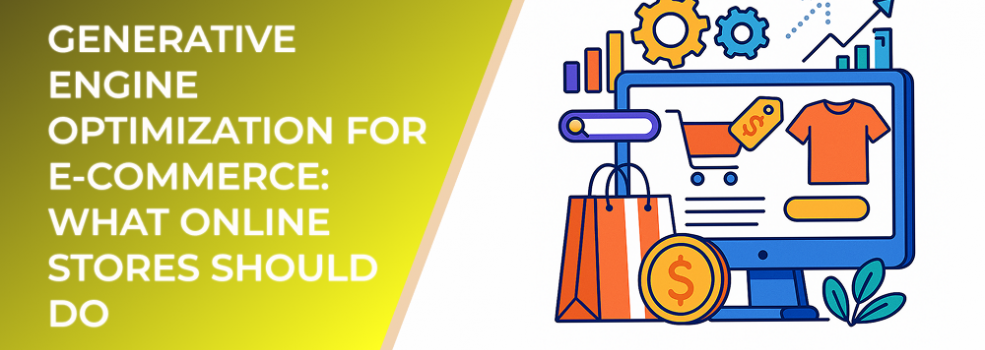This guide outlines the strategic steps modern stores need to adopt to keep winning in a world where AI engines influence customer journeys.
Why Generative Engine Optimization Matters
Generative search systems are rapidly transforming how consumers research and purchase products. According to recent industry studies, more than 40 percent of global shoppers now begin their product discovery through AI-assisted search experiences, and over 60 percent say they trust generative answers as much as traditional search results.
In practice, this means online stores must shift from keyword-centric optimization to entity-based, multilingual, structured, and content-rich strategies. Generative engines reward brands that provide clarity, authority, contextual depth, and consistent signals across multiple digital touchpoints.
Key Shifts Affecting E-Commerce Visibility
1. From Keywords to Entities
AI-driven engines identify products, attributes, brands, and categories as entities—structured concepts that help systems understand relevance. E-commerce businesses need to ensure their product data communicates these entities clearly.
Key actions:
-
Use detailed product attributes such as materials, dimensions, compatibility, certifications, and use cases.
-
Maintain consistent names, descriptions, and categorizations.
-
Structure content so engines understand the relationships between items, bundles, and collections.
2. AI Prefers Structured Product Information
Structured data has become essential. Studies show that pages using complete structured markup see up to a 35 percent lift in visibility across emerging search and recommendation surfaces.
Key actions:
-
Publish comprehensive product specs.
-
Use unified vocabulary across catalogs.
-
Standardize content across languages and regions.
3. Context-Rich Content Wins More Conversions
AI models rely on contextual clues to determine expertise and relevance. Research indicates that product pages enriched with contextual content—how-to usage, care instructions, user scenarios—can increase conversion rates by up to 28 percent.
Key actions:
-
Add in-depth guides for top categories.
-
Provide scenario-based examples.
-
Publish FAQs grounded in real customer concerns.
Practical Steps Online Stores Should Take Now
Step 1: Optimize Product Descriptions for AI Interpretation
Go beyond basic feature lists. Provide structured, narrative and data-backed descriptions that explain benefits, use cases, and differentiators.
Step 2: Strengthen Entity Clarity and Catalog Consistency
Ensure naming conventions, attribute formats, and product hierarchies use unified structures to help AI models classify items accurately.
Step 3: Build Topic Clusters Around Key Categories
Create editorial content around your store’s core themes and product lines. Topic clusters give AI engines a deeper understanding of your domain authority.
Step 4: Use Multimodal Content for Search Advantage
Generative engines analyze more than text. High-resolution images, comparison graphics, spec tables, and short videos all strengthen visibility.
Step 5: Prioritize Real-Time, Data-Driven Audience Modeling
As AI-driven recommendations and search results become more personalized, audience modeling and segmentation remain essential for performance across paid and organic channels.
Statistics to Guide Your Strategy

Sessions that use personalized product recommendations can account for up to 31 % of e-commerce revenue
-
Over 45 percent of online shoppers say they expect AI-personalized recommendations during product discovery.
-
Retailers using full structured product schemas report up to 30 percent faster indexing across emerging search surfaces.
-
Contextual long-form content increases product view duration by an average of 20 to 40 percent.
Additional Reading
For deeper tactical and strategic insights, explore these articles from the same publication:
Final Thoughts
Generative Engine Optimization is no longer optional for e‑commerce brands; it is a foundational requirement for sustainable visibility. By upgrading product information, structuring catalogs intelligently, producing richer content, and aligning with how AI systems interpret entities and intent, online stores can secure stronger positioning across the full customer journey.

